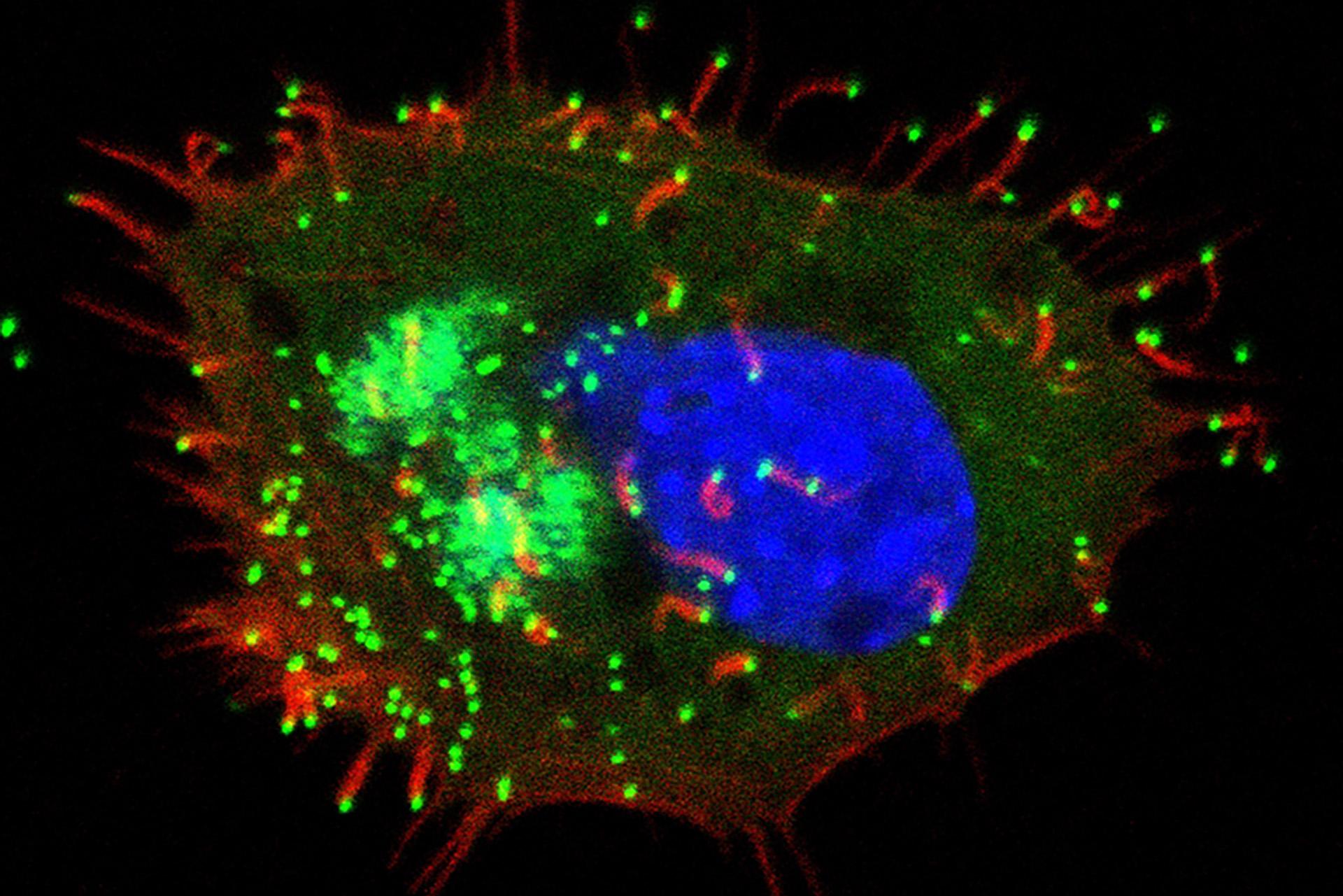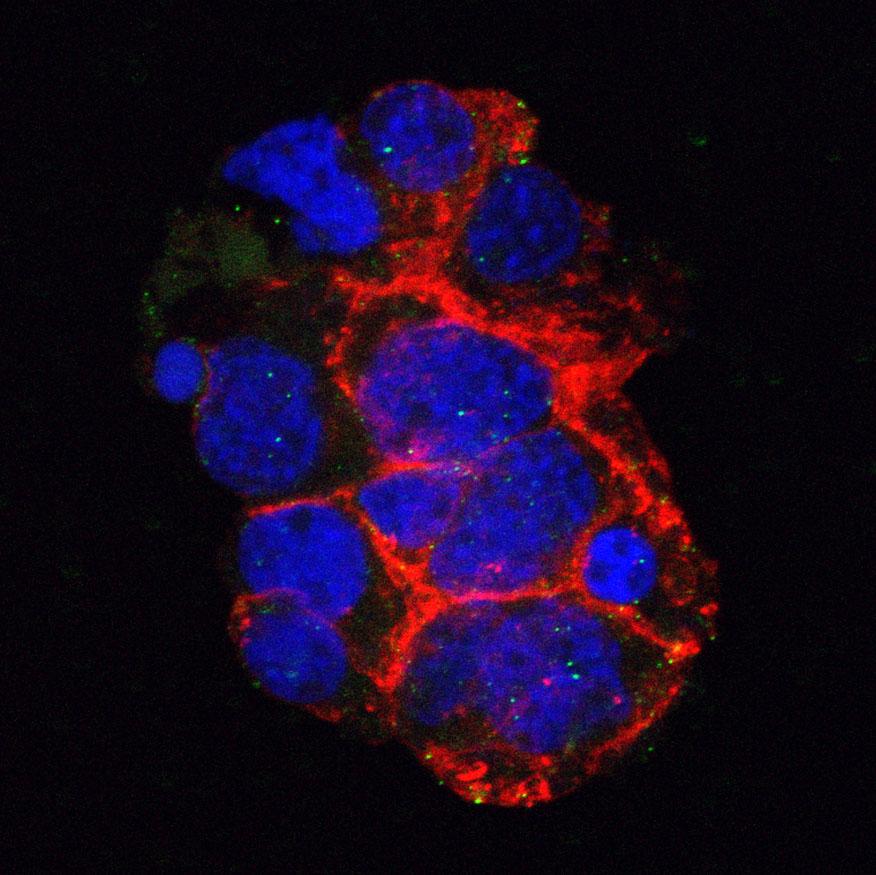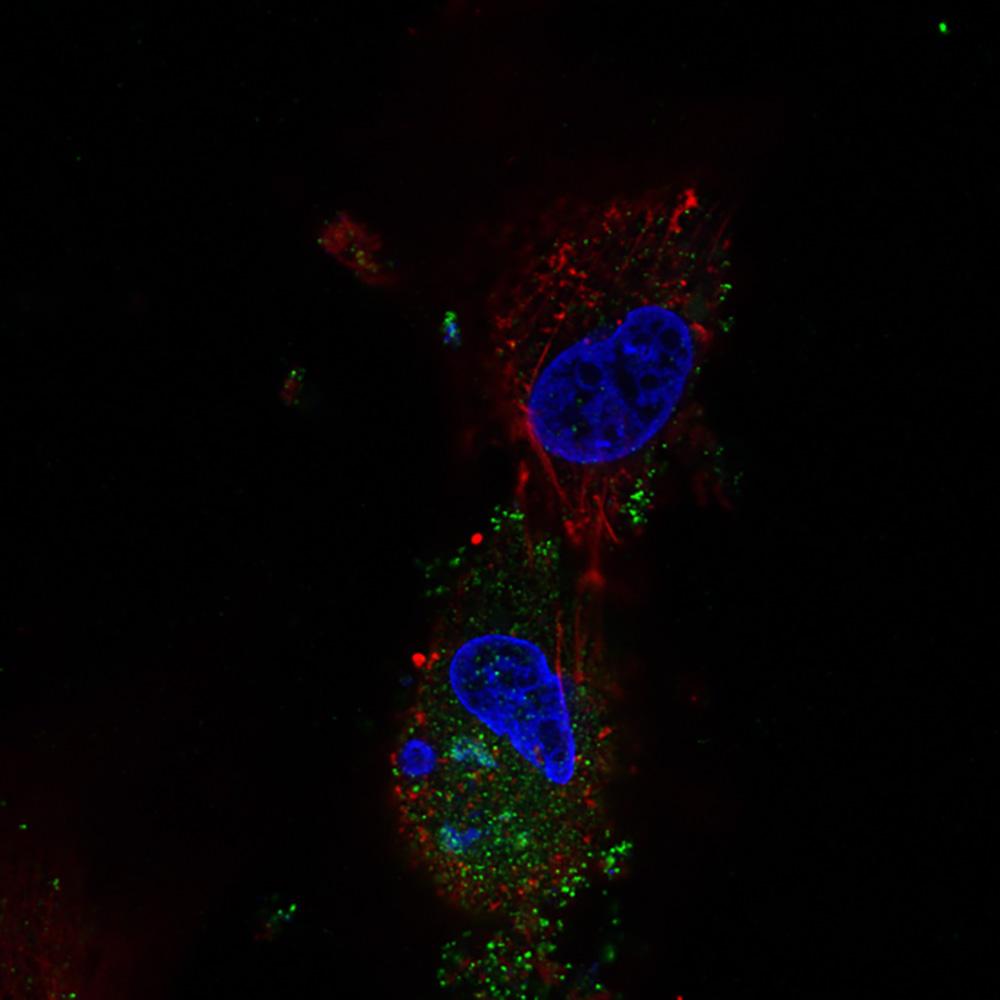Our group
The Capripoxvirus Biology group was launched in 2023 to investigate virus tropism and host species barriers to capripoxvirus infection. Capripoxviruses cause diseases that can be devastating for farmed animals: lumpy skin disease in cattle, sheeppox and goatpox. We seek to answer fundamental questions about how viruses infect cells from different host species, how cells defend themselves from viruses and how viruses overcome such antiviral defences to replicate and spread the infection, using capripoxviruses and other poxviruses as models.
Our aims
Our aim is to gain fundamental knowledge about the biological rules that govern the cellular tropism and the host range of viruses to advance the understanding of how viruses cause disease in livestock and humans, the development of safer vaccines against viral diseases and the prediction of future threats to human and animal health.
Our research
Poxviruses are large double-stranded DNA viruses that replicate in cytoplasm and include notable human pathogens, such as variola (smallpox) virus and monkeypox virus, the cause of the 2022 global outbreak of mpox disease, as well as animal pathogens, such as the capripoxviruses that cause lumpy skin disease virus, sheeppox and goatpox. Another important poxvirus is vaccinia virus, best known as the smallpox vaccine and a valuable tool to study virus-host-interactions.
Poxviruses that infect vertebrates display either narrow or broad host range. Monkeypox and vaccinia infect a wide range of mammalian species, including human and non-human primates and rodents, whereas variola is restricted to humans and capripoxviruses are restricted to ruminants (cattle, goats, sheep). Different from most viruses, the cellular tropism of poxviruses is not determined by the expression of receptors at the cell surface, but by downstream intracellular events, including evasion of host antiviral defences and co-option of pro-viral cellular functions. Therefore, poxviruses offer a unique experimental model to investigate how antagonism of host recognition contribute to virus tropism.
Approximately half of the poxvirus proteome evolved to antagonise host defences and (or) subvert cellular functions to support virus replication. How the multiple viral effectors cooperate to determine cellular tropism remains unclear.
Within the paradigm of the evolutionary arms race between viruses and their hosts’ defence systems, my research programme will focus on two key questions:
- Is there species-specificity in host interactions during infection with capripoxviruses of different host ranges?
- Do viral immune-modulatory effectors work as networks to overcome host defences and to determine host tropism?
Our impact
Lumpy skin disease virus, sheeppox virus and goatpox virus are endemic in Africa, Middle East, Central Asia, and India, but have recently spread to Eastern Europe, Russia, China, and Southeast Asia. Host range of capripoxviruses is limited to ruminants and they cannot infect humans. However, farmers and countries whose herds are affected by capripoxvirus outbreaks incur in significant social and economic costs.
Control of emerging capripoxviruses is key to guarantee food security in the affected regions, but there are serious concerns about the safety of the current live attenuated vaccines against capripoxvirus disease. By understanding the organization of virus-host protein networks underpinning capripoxvirus replication and immune evasion, our research programme is well-posited to deliver fundamental knowledge that will allow the rational design of the next generation of live attenuated vaccines for these livestock pathogens.




